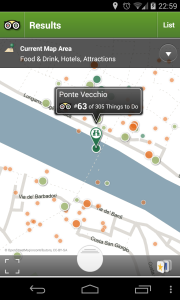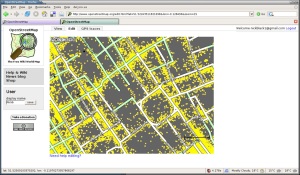Happy 10th Birthday, OpenStreetMap!
Today, OpenStreetMap celebrates 10 years of operation as counted from the date of registration. I’ve heard about the project when it was in early stages, mostly because I knew Steve Coast when I was studying for my Ph.D. at UCL. As a result, I was also able to secured the first ever research grant that focused on OpenStreetMap (and hence Volunteered Geographic Information – VGI) from the Royal Geographical Society in 2005. A lot can be said about being in the right place at the right time!
Having followed the project during this decade, there is much to reflect on – such as thinking about open research questions, things that the academic literature failed to notice about OSM or the things that we do know about OSM and VGI because of the openness of the project. However, as I was preparing the talk for the INSPIRE conference, I was starting to think about the start dates of OSM (2004), TomTom Map Share (2007), Waze (2008), Google Map Maker (2008). While there are conceptual and operational differences between these projects, in terms of ‘knowledge-based peer production systems’ they are fairly similar: all rely on large number of contributors, all use both large group of contributors who contribute little, and a much smaller group of committed contributors who do the more complex work, and all are about mapping. Yet, OSM started 3 years before these other crowdsourced mapping projects, and all of them have more contributors than OSM.
Since OSM is described as ‘Wikipedia of maps‘, the analogy that I was starting to think of was that it’s a bit like a parallel history, in which in 2001, as Wikipedia starts, Encarta and Britannica look at the upstart and set up their own crowdsourcing operations so within 3 years they are up and running. By 2011, Wikipedia continues as a copyright free encyclopedia with sizable community, but Encarta and Britannica have more contributors and more visibility.
Knowing OSM closely, I felt that this is not a fair analogy. While there are some organisational and contribution practices that can be used to claim that ‘it’s the fault of the licence’ or ‘it’s because of the project’s culture’ and therefore justify this, not flattering, analogy to OSM, I sensed that there is something else that should be used to explain what is going on.
 Then, during my holiday in Italy, I was enjoying the offline TripAdvisor app for Florence, using OSM for navigation (in contrast to Google Maps which are used in the online app) and an answer emerged. Within OSM community, from the start, there was some tension between the ‘map’ and ‘database’ view of the project. Is it about collecting the data so beautiful maps or is it about building a database that can be used for many applications?
Then, during my holiday in Italy, I was enjoying the offline TripAdvisor app for Florence, using OSM for navigation (in contrast to Google Maps which are used in the online app) and an answer emerged. Within OSM community, from the start, there was some tension between the ‘map’ and ‘database’ view of the project. Is it about collecting the data so beautiful maps or is it about building a database that can be used for many applications?
Saying that OSM is about the map mean that the analogy is correct, as it is very similar to Wikipedia – you want to share knowledge, you put it online with a system that allow you to display it quickly with tools that support easy editing the information sharing. If, on the other hand, OSM is about a database, then OSM is about something that is used at the back-end of other applications, a lot like DBMS or Operating System. Although there are tools that help you to do things easily and quickly and check the information that you’ve entered (e.g. displaying the information as a map), the main goal is the building of the back-end.
Maybe a better analogy is to think of OSM as ‘Linux of maps’, which mean that it is an infrastructure project which is expected to have a lot of visibility among the professionals who need it (system managers in the case of Linux, GIS/Geoweb developers for OSM), with a strong community that support and contribute to it. The same way that some tech-savvy people know about Linux, but most people don’t, I suspect that TripAdvisor offline users don’t notice that they use OSM, they are just happy to have a map.
The problem with the Linux analogy is that OSM is more than software – it is indeed a database of information about geography from all over the world (and therefore the Wikipedia analogy has its place). Therefore, it is somewhere in between. In a way, it provide a demonstration for the common claim in GIS circles that ‘spatial is special‘. Geographical information is infrastructure in the same way that operating systems or DBMS are, but in this case it’s not enough to create an empty shell that can be filled-in for the specific instance, but there is a need for a significant amount of base information before you are able to start building your own application with additional information. This is also the philosophical difference that make the licensing issues more complex!
In short, both Linux or Wikipedia analogies are inadequate to capture what OSM is. It has been illuminating and fascinating to follow the project over its first decade, and may it continue successfully for more decades to come.

